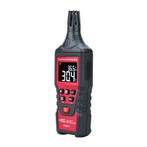Analysis of the imaging principle of the thermal imaging night vision device
Thermal Imaging Night Vision produces realistic, clear thermal images in total darkness, mist and smoke. It can be seamlessly connected with wide-screen navigation system and multi-function navigation system.
The camera lens is free to rotate 360 degrees horizontally and tilt ±90 degrees up and down, allowing you to experience the sensory enjoyment and safety brought by military technology. Designed to enhance the driver's visual ability.
The system can output clear thermal images of the road ahead at night in total darkness, haze and other inclement weather, as well as headlight glare and other low visibility conditions, effectively enhancing the driver's visual range.
At the same time can only pedestrian recognition and front collision alarm function can be found in advance of pedestrians, vehicles and obstacles, greatly enhancing the safety of driving.
Thermal imaging night vision device principle:
Thermal imaging is passive infrared, is to rely on the temperature of the receiving object (thermal energy) issued by the infrared, received through the processing into an image, for display, the general image regardless of the day, night and day are gray and white images.
Thermal imaging is not active infrared, thermal imaging night vision device itself will not send out infrared, just receive a boundary of infrared;
So it is very simple to conclude that as long as the thermal imaging can receive the infrared emitted by the object, there is an image output, and vice versa, if you can not receive infrared, can not reflect the image of the object we want to see.
So now some of the questions we all ask, such as:
Thermal imaging can see through, through the wall, see people and objects in the car, through the glass and other issues, there are certain results.
Through the wall, through the glass, then, the wall to the infrared blocked, thermal imaging night vision device simply on the reception of infrared rays, can not detect the wall and glass on the other side of the object.
That is to say, in order to have an image out, there must not be all sealed objects to block all the infrared light, otherwise it is certainly not receive infrared imaging.
Like some trees, grass and other environments, because there is not all blocking the infrared, so thermal imaging can still detect the back of a higher temperature than the plant objects.
If there are people and animals behind the grass and trees, it is obvious that there is a temperature difference, the higher temperature things will be bright, the lower temperature objects will be dark.
Thermal imaging is actually temperature difference imaging. Objects with high temperatures emit stronger infrared, and objects with low temperatures emit weaker infrared.






